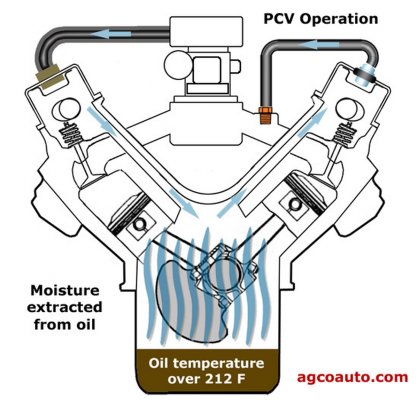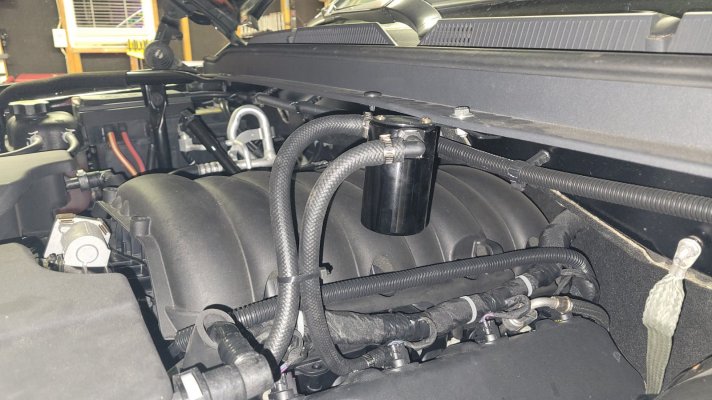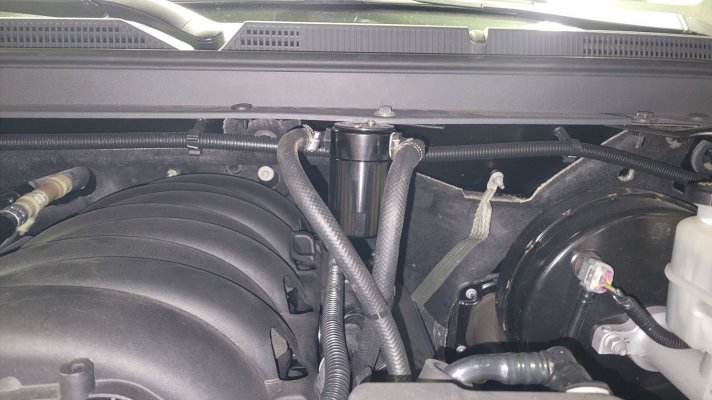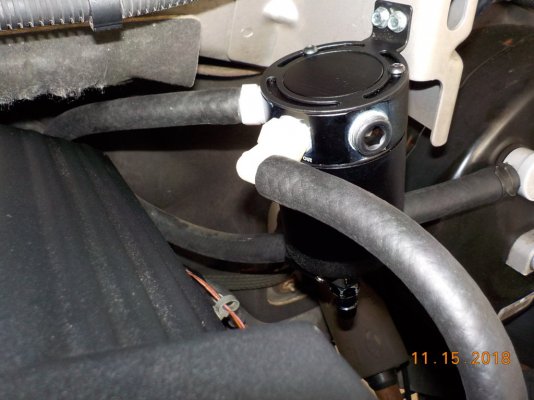They are trying to sale something you don't need on the (clean) passenger side.
PVC system air flow on the passenger side is clean filtered air via plumbing and flow "INTO" the passenger side valve cover. No catch can needed on that side.
Where the catch can is needed is on the driverside/dirty side. The passenger side filtered air becomes dirty air because of blowby gases, and oil (not good) are being sucked "FROM" the driverside valve cover and into the intake manifold. Our engines are not suppose to burn oil.
The original valve covers on our 2007 to 2011 LS engines were poorly designed and allowed too much oil to be sucked out of the engine via the passenger side valve cover (PVC) thus leaving deposits on the intake valves, combustion chambers, pistons, and sometime even sticking the piston rings (my engine).
So GM around 2014 came up with new designed driverside valve covers, for years 07 & 08 = pt# 12570427; and for years 09-11 = pt# 12642655 to minimize the oil being sucked out of the engine.
https://f01.justanswer.com/ebrock63...il+Consumption,+MIL+ON,+Engine+Runs+Rough.pdf
View attachment 415293




